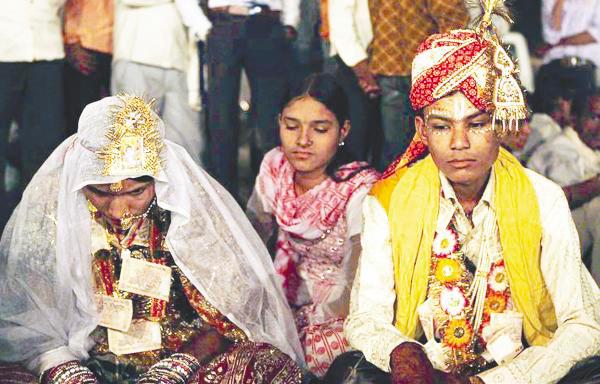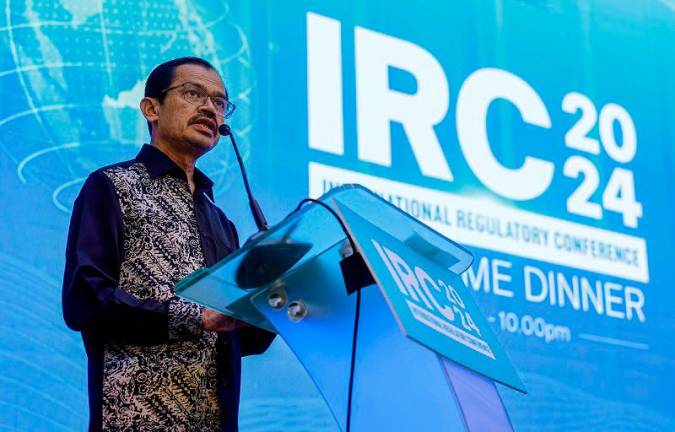A HEART-BREAKING issue that still rears its head from Malaysia to California and from Mauritania to Armenia is child marriage. Although nuptials below the age of 18 are recognised by international agreements as a discriminatory global practice that hinders the development and well-being of hundreds of millions of girls, in many countries the practice continues unabated.
In the US, only 10 states prohibit marriages of individuals under 18. Five states have no age limits while two states have set the limit at age 15. Thirty-four states have age limits of 16 or 17. Nearly 300,000 minors in the US were married between 2000 and 2018.
Child bride Mandy Havlik of California told the press last August that when she resisted being pushed into marrying a preacher, she was rebuked for “ruining God’s will for my life” and had no legal recourse except to comply.
April Kelley recounted how 12 years ago she was married off at age 15 in Missouri when her mother gave consent. Kelley’s husband would take her out of school during lunch breaks to have sex. She endured the torturous relationship for over a year before plucking up the courage to run away.
If the current laws in the US disappoint you, be ready for a seismic shock at the number of child marriages across a wide swath of Africa and Asia, notably in Niger and Bangladesh. Most of the estimated 12 million underaged girls wed every year are either Asian or African.
Last February, in the Indian state of Assam, which has a population of just 35 million people, police arrested more than 2,000 men, including Hindu priests and Muslim clerics, for involvement in illegal child marriages.
Malaysia is also a laggard as only two states out of 13 have banned marriages below the age of 18. Six years ago, a furore was caused by the marriage of an 11-year-old Kelantanese girl to a 41-year-old man. A month later in Kelantan, a 15-year-old girl was married off to a 44-year-old man. Her parents, who have 13 children, explained that they wanted to give her a better life away from poverty.
The year 2018 was a low point for Malaysia, with 1,856 children getting married, 90% of whom were girls. However, it was also a watershed year, as the Girl Guides Association took a leading role in pushing for the age of marriage to be raised to 18 from 16. Its campaign garnered widespread public attention, with a “Walk the Talk to End Child Marriage” rally.
In family matters, the US is not a good role model for Malaysia. It is towards Indonesia that we must turn our heads. In 2019, the Indonesian Parliament passed a law to raise the minimum age for women to marry to 19.
Lawmakers made the decisive move in light of a tragedy where an 11-year-old married girl and her newborn died while she was in labour. She was brought to the hospital by her mother, who was only in her 20s while the girl’s husband was nowhere around.
Child marriages are usually defended on grounds of religious belief, and this is occurring across all ethnic groups and religions around the world.
Some politicians in Malaysia have publicly voiced their support for child marriages, claiming that a ban would contravene religious teachings.
It all depends on your way of interpreting the relevant passages in the scriptures.
The absolute way is mostly favoured by conservative traditionalists because it saves them the effort of fresh thinking. All they need to do is assume that religious laws and practices once written down and have not been abrogated are valid for all time.
This is the same perspective as the common notion that the laws of nature are the same for all time. It is not true. Every phenomenon of life and every law of nature is bound to its time context. Take the cosmological constant as an example. The cosmological constant is a homogeneous energy density that causes the expansion of the universe to accelerate. It is assigned a value.
Scientists believe this value may change over time: the critical density changes with cosmological time and if it dissipates away, the universe will slow down its expansion.
Many religious leaders often stand on the wrong side of time because they fail to understand that the correctness of any scriptural interpretation depends on the context. The farther removed we are from a scriptural era, the more likely it is that the context has changed. When the context changes, the standard practice may no longer be applicable.
What was the context of child marriage? The main factor was lifespan. During the pre-industrial era from the invention of agriculture in 12,000 BCE (Before the Common Era) up to the year 1760, the average human lifespan in all farming, pastoral and urban societies around the world was only 35 years.
Contributory factors to short lives included cramped living, unhygienic conditions, especially poor sanitation, infectious diseases, lack of medical care, child mortality (deaths before the age of 15), violence and excessive warfare. You had to belong to the privileged class to live until 70.
If a girl was still single at age 18, she would be considered an old maid. If you held your wedding at 16, that is a late marriage. Today’s global life expectancy exceeds 70 years – double what it was 300 years ago. If you wed today at age 18, that is an early marriage.
The second factor behind child marriages was female subjugation. With the dawn of civilisation in 5,000 BCE and the necessity for warfare to expand territorial control, men assumed total power and women were stripped of the equal status that they had enjoyed with men in hunter-gatherer times.
Civilised societies made women the property of men, a gender abuse that persisted until the 20th century and is still a feature of traditional macho societies. Parents married off their children, and husbands could do as they pleased with these child brides.
No religion disturbed this social structure because any sweeping revolutionary move would be rejected by almost all men who would then scuttle that religion. As only men held power, without their support a religion could not survive.
A closely related development was the introduction of slavery as a crucial institution of civilised societies. Slaves acquired mainly through warfare provided free labour for dirty jobs and for rich households. The institution of slavery persisted in some African and West Asian countries until the 1980s, although the mechanisation of industry beginning in 1760 had made it unnecessary.
Here again, no religion opposed slavery during the scriptural era because the purpose of religion was not to dismantle civilisation but to improve its moral condition while preserving its key features.
The argument to maintain child marriage on grounds that it has not been outlawed in any scriptural text is the same justification used by some terrorist groups in West Asia to enslave women and children captured in raids.
The third compelling factor in child marriage was poverty and illiteracy, with surplus labour chasing too few jobs. Before the Industrial Revolution that began in 1760, extreme poverty and illiteracy doomed the lives of 80% of civilised populations. Barely able to make ends meet, parents were eager to get their young daughters married off for cash in the form of a dowry.
These young brides suffered childbirth complications, often resulting in the death of the mother and infant early in life. They were also likely to become victims of constant severe domestic violence at the hands of their husbands and in-laws.
Scientific research has shown that there is a strong statistical link between female subjugation and violent instability in any country. Three women scholars – Valerie Hudson, Donna Bowen and Perpetua Nielsen – studied misogyny in 176 countries and in The First Political Order: How Sex Shapes Governance and National Security Worldwide, published in 2020, concluded: “It seems as if the surest way to curse one’s nation is to subordinate its women.”
The writer champions interfaith harmony.
Comments: letters@thesundaily.com











